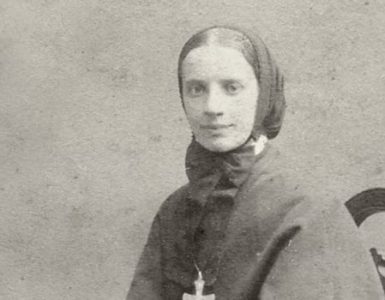The majority of Catholic young adults feel called to the vocation of marriage. One of the toughest obstacles they navigate is finding their future spouse. It can be a source of anxiety: Where will they meet them? What are the most important qualities in a spouse? Do they have realistic expectations of marriage? Are there red flags they should watch for?
Believe it or not, a successful marriage requires more preparation than that mandated by dioceses for couples desiring the Sacrament of Matrimony. It requires men and women to be serious disciples of Christ Jesus, taking advantage of the means of grace Christ offers and growing in virtue. Because that’s easier said than done. Where can we turn for inspiration? The saints – our married saints! So on behalf of CE’s readers, I put some questions to Patrick O’Hearn, author of the new book, Courtship of the Saints: How the Saints Met Their Spouses.
Shane Kapler: You write about the “courtship” of the saints, as opposed to “dating.” Very briefly, what is the difference between the two?
Patrik O’Hearn: In my book, I state that “Courtship looks to the future — to eternity.” Courtship’s main purpose is to find and marry a virtuous spouse—one that will help you reach Heaven. Courtship always keeps marriage front and center as well as includes getting the father’s permission to court and marry his daughter. Courtship has existed for thousands of years, even before the time of Christ. On the other hand, dating is a more recent fad that focuses on the present and how much pleasure one can get.
Kapler: Is it okay for Catholics to “date”?
O’Hearn: When dating is done purely and chastely and never loses sight of the end goal of marriage, it can be an option for Catholics. Courtship sets clearer boundaries, which helps keep one on the narrow way. Regardless of whether one courts or dates, a person needs to remember that how one prepares for marriage is likely how one’s marriage will turn out.
Kapler: You tell the stories of more than 20 married saints and blesseds. What two stories affected you most personally?
O’Hearn: Every married couple presented in this book has a lesson not only for those discerning marriage, but also for those already married. And each couple’s story has already challenged me to become a better husband and father. I was impacted by the story of Saint Francis and Eleanora Borgia and Saint Gianna and Pietro Molla. Many people forget that before Saint Francis Borgia became a great Jesuit, he was a man in love. Tragedy would strike his marriage when his young wife died unexpectedly. But what struck me is how Saint Francis prepared for marriage, that is, with the greatest purity. Those whose courtships are pure set themselves up for a holy marriage.
In terms of Saint Gianna and Pietro Molla’s marriage, we see how they ardently sought God’s will. It was one of the reasons they married later in life. They waited for God’s will to unfold rather than force things. And after they were married, their love only intensified. But the cross was right around the corner when Our Lord brought Gianna to Himself. But through their sufferings and their holy marriage God would impact so many future marriages.
Kapler: In addition to prayer, what are three pieces of advice the saints would give someone searching for his or her future spouse?
O’Hearn: The saints would say put yourself in the “near occasion of grace.” You are more likely to meet a holy spouse at Daily Mass or in the confessional line than you will at a bar or nightclub. In fact, St. Gianna and Pietro Molla fell in love at a priest’s first Mass, even though they had met a few years earlier on two occasions.
The saints also reveal how important the virtue of patience is. Not every saint met their spouse at college or even in their youth. Saint Louis and Zelie Martin lived in the same city for fourteen years and had opportunities to marry earlier. But they waited for true love and for a godly spouse, not a godless spouse.
Finally, the saints beckon us to look for someone who dresses modestly and conducts him or herself with great virtue. Dominic Taigi once said about his future bride, Blessed Anna-Maria Taigi, “I still remember how modestly and tastefully she was dressed.” Pietro Molla was particularly struck by St. Gianna’s reverence, especially how she made the sign of the Cross. He was also drawn to her “good smile.” Since marriage is filled with many crosses and sufferings, it is crucial to find someone who knows how to handle suffering well. Someone who keeps their joy and even sense of humor through the good and the bad.
Courtship of the Saints: How the Saints Met Their Spouses is available from TAN Books.













